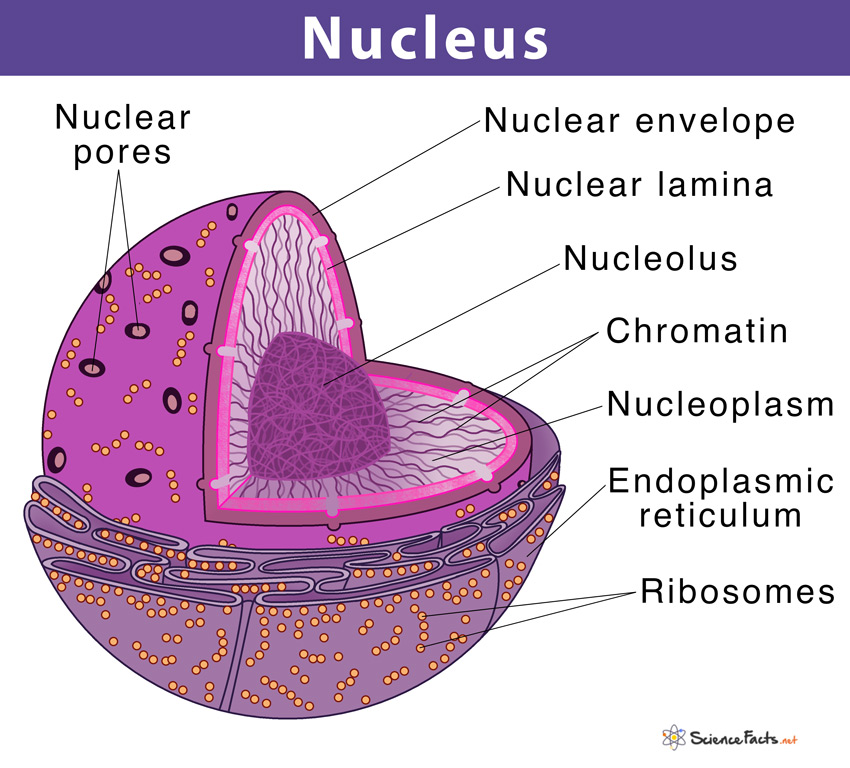The word ‘nucleus’ (plural: nuclei) is derived from the Latin word ‘nucleus‘, meaning ‘kernel’ or ‘seed’.
Structure and Characteristics
Parts and Their Functions
1) Nuclear Envelope and Nuclear Pores
Surrounding the nucleus, the nuclear envelope is made of a phospholipid bilayer, similar to cell membranes, and contains tiny openings called nuclear pores over them. The two membranes are often referred to as the inner and outer nuclear membranes with a fluid-filled region called perinuclear space in between. The perinuclear space has a thickness of 20 to 40 nm. The outer membrane is attached to ribosomes and is continuous with the cell’s endoplasmic reticulum, a system that helps to package, transport, and export substances outside the cell. Functions
Nuclear envelope separates the nuclear content from the cytoplasm an is selectively permeable in natureNuclear pores regulate the flow of molecules into and out of the nucleus
2) Nuclear Lamina
They are meshwork of protein filaments organized in a net-like fashion that line below the inner nuclear membrane. The proteins that make up the nuclear lamina are known as lamins, which are intermediate filament proteins. Functions
Supports the nuclear envelope, maintaining the overall shape and structure of the nucleus
3) Chromatin
It is a complex of genetic material (DNA or RNA) and proteins found in a resting or non-dividing cell nucleus. The chromatin is classified into two types, heterochromatin and euchromatin, based on functions. The heterochromatin is a functionally inactive form of chromatin, found near the nuclear envelope. On the contrary, euchromatin is a mild, less condensed form that is in functionally active state. An organized chromatin material that is highly condensed and paired is known as the chromosome. Functions
Contains hereditary information and instructions necessary for controlling processes such as metabolism, cell growth, and cell divisionHelps in gene expression where DNA molecules make an RNA copy, a process called transcription which is later converted to proteins by a process called translation
4) Nucleoplasm
Also known as karyoplasm, it is found inside the nucleus, and is a gelatinous substance similar to the cytoplasm, being composed mainly of water with dissolved salts, enzymes, and suspended organic molecules. Functions
Protects the nuclear content by providing a cushion around the nucleolus and the chromosomeSupports the nucleus to hold its shapeProvides a medium through which enzymes and fragments of genetic materials (DNA or RNA), can be transported throughout the nucleus
5) Nucleolus
It looks like a dark spot within the nucleus and is a dense, membrane-less structure composed of RNA and proteins along with granules and fibers that remain attached to chromatin. The nucleolus contains multipleregions called nucleolar organizers that are the segments of chromosomes that contain the genes for ribosomal RNA. The nucleolus disappears when a cell undergoes division and is reformed after the completion of cell division. Functions
Synthesize ribosomes that are involved in protein synthesis
